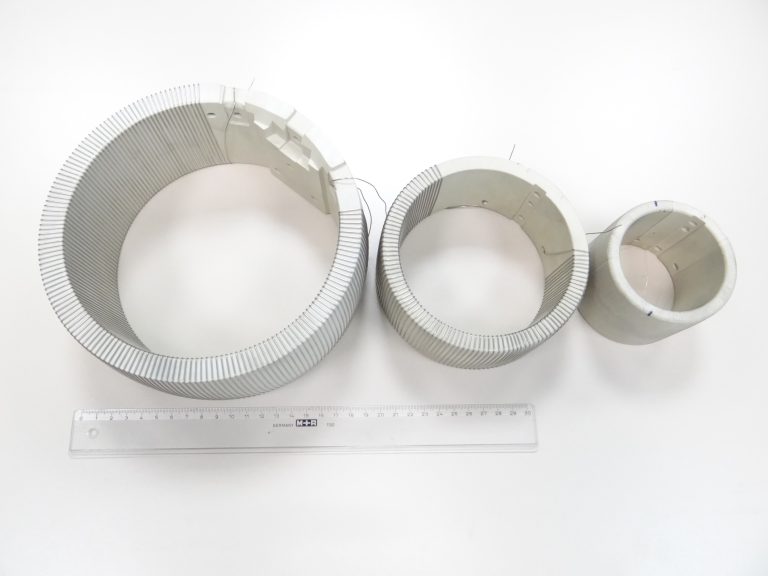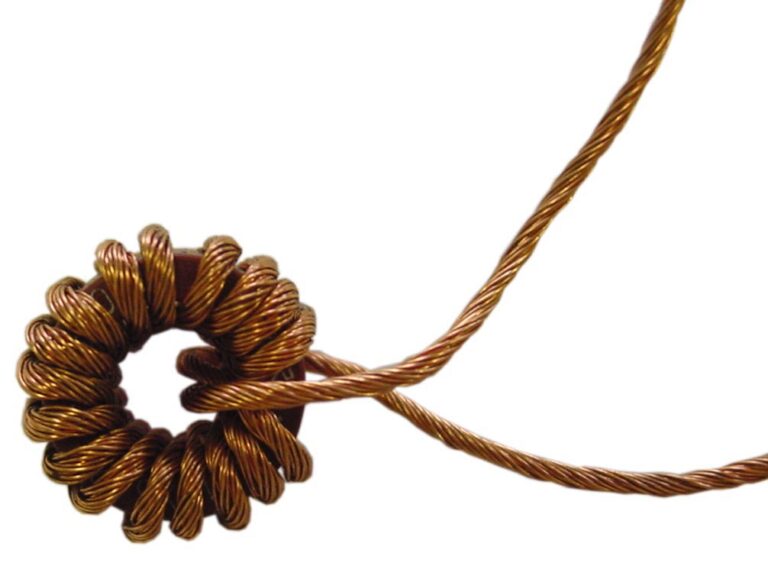Toroidal core winding
Following this text, you will find a list of our machines with a brief description and a wrapping pattern. If you are not sure which machine is right for you, simply fill out this questionnaire.
DB 1

DB 1-SM

DB 2-SM

Due to its wide variety of winding heads and extensive range of special accessories, it is suitable for many winding tasks.
Furthermore, thanks to the stepless electronic speed control, the winding speed can be optimally adapted to the operating conditions.
DB 20

continuously and therefore optimally adapted to the working conditions.
Communication with the operator takes place via a touchscreen display operator guidance.
All winding parameters (winding speed, direction of rotation of the winding head, laying feed and number of turns) are entered via this. The winding process takes place automatically by processing the saved and selected program (50 programs possible). The individual operating modes are controlled with a PLC.
DB 30

Ring guides available.
The feed and the head drive are coupled as NC axes. The roller pressure is carried out pneumatically.
The special thing about the DB 3 is a PLC with its own intelligence and plain text guidance for storing winding programs. This enables the operator to automatically process different winding programs after one-time programming. In order to achieve simplified and clearer programming operation, the control panel was equipped with a touchscreen display.
In addition, the winding speed can be optimally adapted to the operational working conditions thanks to the continuous, electronic speed control.
Parts at risk of corrosion are treated galvanically; all drives have enough reserves to achieve the highest possible service life even under the most difficult operating conditions.
DB 40

The feed and the head drive are coupled as NC axes. The roller pressure is carried out pneumatically.
In order to achieve simplified and clearer programming operation, the control panel was equipped with a touchscreen display.
DB 150

DB 200

quickly adjustable between each other.
The feed and the head drive are coupled. Roller printing is done mechanically. Magazine is replaceable.
DBA-S

ERV

can be operated on any normal AC line, which is particularly advantageous for companies without central compressed air or for HOME WORK.
It is characterized by its simple operation and immediate readiness for use and is particularly suitable for winding small toroidal cores with short wire lengths.
ESRV33

Together with a stronger gear, this enables the feed force to be transferred to the spool with precision, even for very thick wire with a diameter of up to 3.5 mm. This means that a clean winding pattern can be created even with thicker wire diameters. Due to the exclusively electrical design, this device can be operated on any normal AC line, which is particularly advantageous for companies without central compressed air or for HOME WORK. It is characterized by the simplest operation and immediate readiness for use and is particularly suitable for winding small toroidal cores with short wire lengths.
KWS

Thanks to the use of proven construction elements, the machine is largely maintenance-free.
Parts at risk of corrosion are treated galvanically. All drives have enough reserves to achieve the highest possible service life even under difficult operating conditions.
With the KWS, the wire is guided through the core center opening without tools. The stability of the wire is exploited here. A pneumatic gripper clamps the wire with a projection of 10 -15 cm and guides it linearly through the remaining hole. Another gripper grasps the wire on the other side of the core and pulls it to the final position (this is determined by the wire length). Once there, the wire is pulled through 180° using a swivel cylinder over a wire guide roller consisting of two guide halves that can be moved relative to one another. After this step, the strong wire is grasped by a third gripper. The guide rollers move apart and the wire is guided back to the core holder, where it is again transferred and handled in the same way as before.
The core is inserted and clamped manually using a clamping mechanism.
The core is clamped in a chuck, which is mounted so that it can rotate axially in relation to the wire pulling direction. The core is driven by a chain and a servomotor, which enables precise control of the feed. To prevent the wire from slipping when winding the first turns, a pneumatic gripper is attached to each core clamping jaw.
PRV

SDWH

with magazine. The wire end is being manually applied around the coil body, everything further, like wire pull, layer pitch, turning direction etc. occurs automatically. To reach an easy and clear operation of the programming, the control panel is being equipped with a touch screen display. By the exclusive electric construction, this device can be connected onto every ordinary single-phase
alternating current conduction. It excel itself by easy operating and immediate operation readiness and it is especially suitable for the winding of smaller Toroidal with short wire lengths. The new SDWH is winding wires up to 3,5 mm.
REW 250-400

Resistance material with corresponding bending moment.
The maximum winding width is equal to the inner width of the rectangular core minus 1 mm. It can therefore be wound to within 0.5 mm of the leg of the core. It is also possible to wrap all four sides.
Thanks to the electronic speed control, the winding speed can be optimally adjusted to the working conditions. A presettable counter switches off the machine when the preselected number of turns is reached. The setting of the laying feed is stepless and can be corrected during the run. The feed direction can be switched using an illuminated button, and the set direction is then displayed at the same time.
RWA 2

Due to the steplessly working
electronic speed control, the winding speed
can be optimally adapted to the working conditions.
